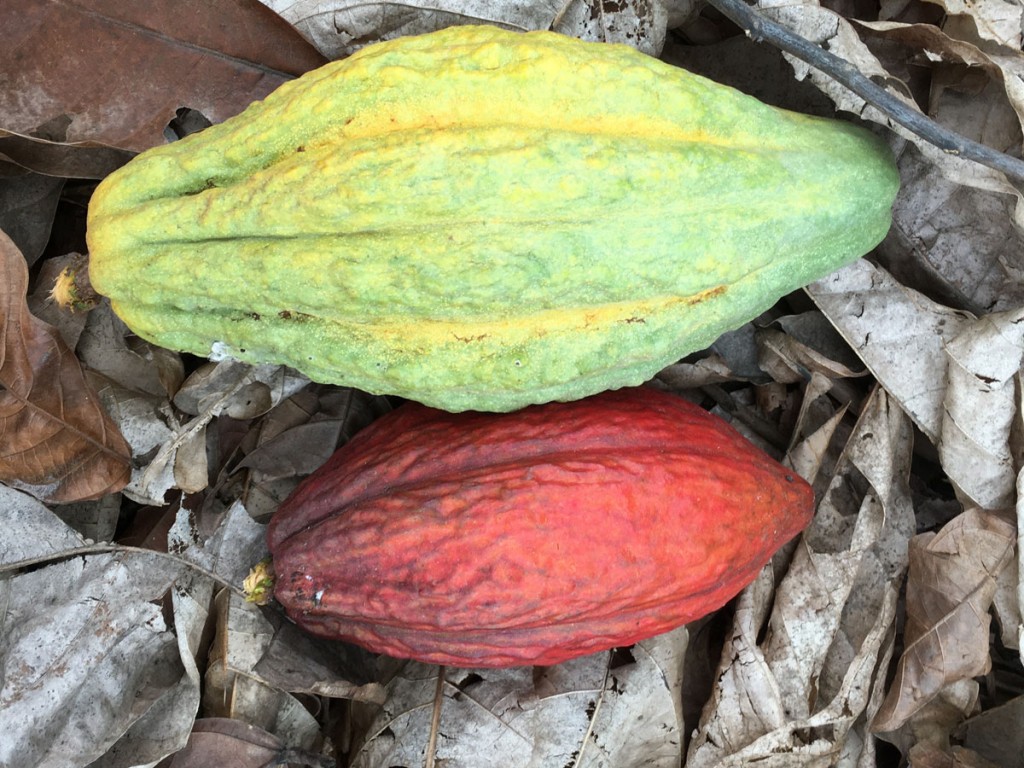Page 1: Ecuadorian Cacao
Page 2: Cacao Shipping
Page 3: What’s Next for Ecuadorian Cacao?
Page 4: Global Cacao Trade
What’s Next for Ecuadorian Cacao?
There are disagreements within Ecuador’s industry on what direction to go. For one, a sizable percentage of cacao grown in Ecuador — the exact percentage is a matter of debate — isn’t Nacional at all, but a hybrid variety known as CCN-51. Developed by an Ecuadorian agronomist in the 1960s, this plant is resistant to many of the common diseases that plague cacao, and has elements of Nacional. But its flavor profile is nowhere near that of the premium bean. It usually garners the same price as mass-grown African cacao.
Most larger-scale farms in Ecuador to date prefer CCN-51, because yields are so great. When Victoria first planted its Nacional trees, other producers “thought we were crazy,” said Francisco Aray Roca, Victoria’s avuncular director of Agriculture.

Ecuador is wrestling with a dilemma common among commodity producing countries: Do they gain share through simply ramping up production of the most durable and easy-to-grow plants, grabbing what the market offers, or do they attempt to add value in other ways, such as focusing on premium varieties or more processed products?
“There is a tension between increasing the volume of export vs. the quality and price paid per ton,” said James Le Compte, CEO of the super-premium Ecuadorian chocolate maker To’ak.
This issue is heightened because cacao production in Ecuador has stagnated over the past three years, at around 300,000 tons. But the country has ambitious plans to up that output to 500,000 tons over the next five to ten years.
Some worry that in a race to gain market share, the quality of Ecuadorian cacao will suffer.
“There’s concern in the industry that if we keep focusing principally on the CCN 51 strategy, Ecuador risks losing that comparative advantage based around quality,” said Le Compte.
Guzman disagrees. He believes big investments will drive development and new farms will be designed more along the lines of Hacienda Victoria model. He also cites two new varieties of highly productive, fine flavor cacao that the Ecuadorian government launched last year, with another two varieties due to be offered over the next year.
Uncertainty has grown as the coronavirus spreads. The worldwide price of cacao has plummeted over the past six weeks. Premium quality chocolate has been hard hit as well (see sidebar on page 4). Ecuador, and especially Guayaquil, has been walloped by the pandemic, with afternoon and nighttime curfews to enforce shutdown orders.
(Hacienda Victoria, for one, initiated a self-quarantine within the farm. Those above 60 were moved out. Other workers agreed to stay on the farm for 60 days, with food and lodging provided to them. According to Guzman, his farm was able to ship containers to Yokohama, Amsterdam and Oakland.)

Follow us on social media: